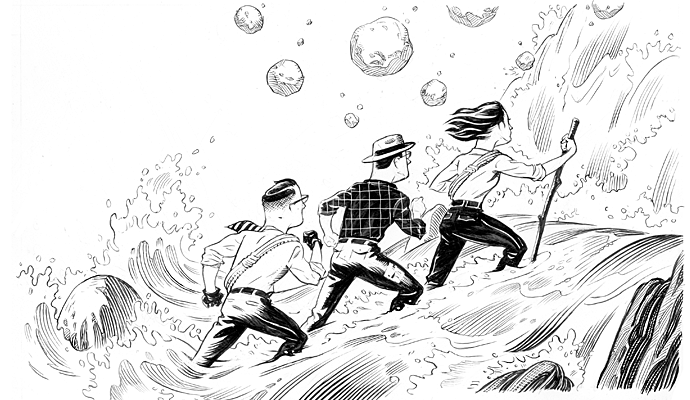Ambiguous times are no time for ambiguous leadership
With so many employees working remotely, leaders must take extra care to ensure their communications leave no room for misinterpretation.
In a previous job, I worked for a manager who was terrific in almost all the ways you’d want a leader to be terrific — she was smart, straightforward, consistent, ambitious for great work. But she did have a small email tic that would occasionally give me pause. If I had to be out of the office, I would send her a note the night before. Her response was always the same: “Fine.”
That simple word, so clear in conversation, becomes more complicated in an email, in which there is no context or signal of tone. Did she mean fine as in, “Sure, no problem”? Or was it more of a, “Well (sigh), okay”? I’m fairly confident it was the former, but I was never 100 percent certain.
I’ve been thinking about those small moments of uncertain communication lately, as the COVID-19 crisis has prompted countless companies to shut their office doors and rethink whether staff need to be in those offices as much as before the pandemic, or even at all.
The nearly overnight rush to remote working has had clear benefits. It reduces the wear and tear of commuting for both people and the planet. It can also give employees more of a feeling of control over their lives, and, when geography is no longer a consideration, companies can find new opportunities for hiring talent.
But if remote working is going to work, leaders have to communicate more and be extra vigilant about removing as much ambiguity as they can from their exchanges with staff, particularly in email, in which the recipients don’t have the benefit of hearing the sender’s tone. Leaders have to ensure that what is clear to them is also clear to others, in language that doesn’t leave people scratching their heads. The same is true for video meetings, conducted in small squares on your computer screen that can make it hard to read nuances of body language.
There are some basic rules of human nature at play here. One of them is that with less face-to-face contact with bosses, employees are more likely to feel free-floating anxiety and wonder, “What do they think of me?” They may study email as if they were amateur archaeologists, searching for hidden meaning, often when none exists. And that self-generated feeling of being under a microscope can be intensified for employees whose work is also being monitored by their bosses through surveillance apps.
With less face-to-face contact with bosses, employees are more likely to feel free-floating anxiety and wonder, ‘What do they think of me?’
Second, whenever there is uncertainty, people’s thoughts can go to dark places and start spinning worrisome scenarios. Two CEOs I’ve interviewed brought this insight to life by sharing their own memorable stories.
Christy Wyatt, a Silicon Valley veteran who is now the CEO of cybersecurity firm Absolute Software, based in Vancouver, British Columbia, recounted an experience of communication gone awry when I spoke to her years ago. “People will make up stories in the white space,” she said. “We have a very full kitchen [in the office]. I hired a new head of business operations, and she decided we were going to switch out the vendors. There was a week when the supply went very low. Because we hadn’t said anything about it, people started saying, ‘There are layoffs coming; bad things are going to happen.’”
Wyatt had to tell everyone that the change in vendors was the reason for the dwindling snack supplies, adding in an all-hands meeting: “Guys, it’s just the nuts in the kitchen. That’s it.” The lesson for her? “People look for symbols, and they look for meaning where maybe there isn’t any,” she said.
Tom Lawson, the chair and CEO of FM Global, a property insurance company headquartered in Johnston, R.I., shared a similar story. “As I was moving up through the different management positions, I learned the hard way about how people can interpret a message,” he told me. “I was running our research group, where we have a lot of science Ph.D.s. One morning, it was rainy and horrible as I drove to work. I got to the parking lot, which was full, so I had to park far from the building and walk through the pouring rain without an umbrella. I was drenched and running late for a conference call.
“So, I walked right past the receptionist, didn’t talk to anybody, went into my office, and shut the door. I did my conference call and then forgot to open my door when it was over. About three hours later, our head of research knocks on the door. He said, ‘Can I talk to you? We’ve got a problem. Everyone’s saying that the company’s in financial trouble and that our research is going to get outsourced.’ I said, ‘What?’ Then he said, ‘You walked right into the building on the day we released our financials, and you didn’t talk to anybody. You shut your door and you locked yourself in.’”
Lawson added: “In fact, our financials were fine, and I told him the story of what happened, and he started laughing. I spent the rest of the day walking around, telling people that everything was fine. But it was a great example of how your actions can be misinterpreted. If you don’t communicate, people will make up narratives themselves, and those narratives may be negative.”
The opportunities for people to worry about hidden meaning have gone up exponentially, because many of us no longer see our managers every day, and because we are all living in a time of great uncertainty. In this environment, the absence of action or comments on key events may provide grist for the anxiety mill, too. Because of this, leaders need to make sure that their communications are as free of ambiguity as possible, so that all employees who are working remotely can focus on the work itself, rather than worrying about what the boss is thinking.






